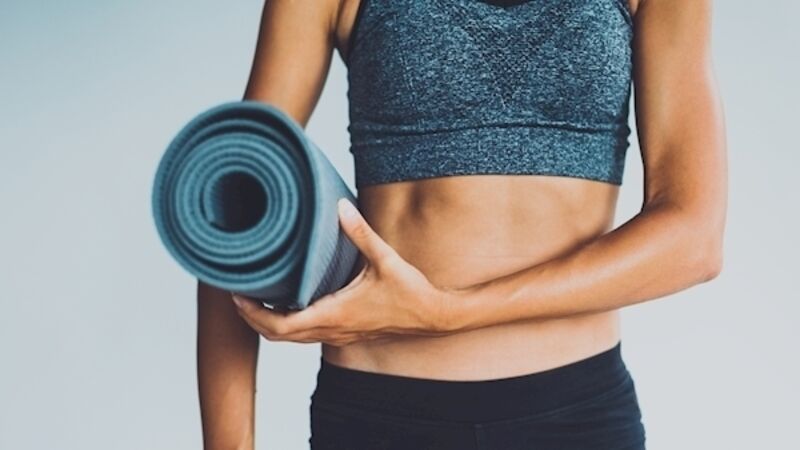Why Pilates is now the go-to exercise of A-listers

Once considered the sweat-free option, Pilates is now the go-to exercise of A-listers in search of a toned and taut body, writes
PILATES was once perceived as an easy gym option, a workout that could be slipped in before lunch or an oat-milk latte with friends, no sweat required.
Yet, thanks to a growing list of athletes and celebrities — from David Beckham and Andy Murray to Kate Hudson, Kate Bosworth and Adele — who credit the exercise form with transforming their bodies, improving core strength, balance and flexibility, not to mention weight loss, in the process, its image has been overhauled.
Miranda Kerr and Kate Hudson are among those who post images of their Pilates routines on social media, claiming it is the one thing that helps to keep their bodies taut.
And with its injury-prevention and posture-perfecting benefits, it’s no surprise that sleek new studios are cropping up everywhere or that Pilates participation among men is rising.
The message from fitness experts and physios? If you have put it off until now, then 2020 is the year you should try Pilates.
Leading the charge to change our bodies for the better is the woman dubbed the Queen of Pilates — and with good reason.
Lynne Robinson began teaching Pilates 26 years ago, opened one of London’s first exclusive Pilates studios in 1995, and has been at the forefront of a revolution that has seen the approach outlast and out-perform passing fitness fads.
Like many who have since benefited from the approach, she first tried Pilates in an attempt to cure back pain. Now, at 65 but with a body as poised and agile as that of someone 30 years younger, she has a client list that is impressively glossy.
Robinson has worked with everyone from Elizabeth Hurley, Holly Willoughby, and Sophie Dahl to Hugh Grant and Pat Cash, as well as being hired to guide first-team players from Chelsea Football Club and elite rugby professionals.
The author of written 18 books, the latest being Shape Up With Pilates, Robinson has produced countless DVDs outlining her Body Control Pilates principles and oversees what has become the largest training school in Europe for potential Pilates teachers.
Yet even she believes the appeal of Pilates is entering new ground.
“What has changed recently is the huge groundswell of interest in Pilates that has made it more than a fashionable trend,” she says.
There is now so much medical backing for its effects with physiotherapists and many GPs now recommending it because they understand how and why it works.
Emerging research underpins its promotion to more than a fitness fad.
In 2017, a paper in the International Journal of Sports, Exercise and Training Science found that men who did a one-hour Pilates class three times a week for 10 weeks were able to improve their step-up and leg-press performance because of the strength they had gained.
Another paper in the journal Applied Science Research (2015) reported how that regular Pilates improved the leg strength, gait and walking speed — all important in the prevention of falls — in people in their 60s and older.
While we all know it as a workout that achieves remarkable results in terms of lean, lithe bodies that are structurally and functionally strong with impressive abs, it was seen as quirky and niche at the outset.
Its reputation as a dancers’ training aid stemmed directly from the New York “body-conditioning gym” opened by founder Joseph Pilates in 1926.
With a background in self-defence and boxing, his aim was to improve fitness of the military and police force, but an influx of clients from the New York City Ballet School which happened to be situated on the same block soon led to its reputation for creating long and supple bodies.
That outcome has not changed, but Robinson says that the teaching of Pilates has evolved in the meantime.
“Many of the principles remain, but we have added elements of cardio and the use of weights where necessary,” she says.
“And there have been some technical changes through necessity.”
By that she means the infamous instruction to ‘zip and hollow’, to draw in’ their abdomen, or ‘bring navel to spine’ that was widely used in the early days.
Pilates came under fire when researchers found little evidence that the instructions were therapeutic, some suggesting they may even cause harm.
Part of the problem lay with the principle of flattening the spine to the floor, a practice that straightens out its natural curves and loads the ligaments of the back, potentially causing the very pain it was meant to prevent.

“Through research, we now know that early thinking to be incorrect,” Robinson says.
“It’s led to colossal changes in the industry as we now know the core needs to be used only as and when we need it, that it should be fit for purpose, no more, no less.”
Pilates also became a victim of its own early success as demand outstripped supply and more classes were taken by inexperienced teachers.
“Selecting a good instructor is essential,” Robinson says. “Ideally there should be no more than 12 participants per class and your teacher should not participate but circulate around the room so that they can spot a technical error and guide you towards correction.”
With its credibility soaring, Pilates is now incorporated into the training regimens of elite footballers and professional rugby players as well as Olympic athletes.
Vlada Korolova, founder of The Pilates Studio in Dublin, says that it has become hugely popular with sports people and business high flyers.
“More men than ever are trying Pilates, but we have also seen a steep rise in the number of people who try it having incurred an injury in sport or through lifestyle issues such as spending too much time at a desk,” Korolova says.
Pilates helps to correct injuries and imbalances, yet often allows people to keep exercising and conditioning themselves while they are in recovery.
And what of its purported ability to change your appearance? Korolova insists it will happen — given time and commitment.
“Joseph Pilates recommended doing it three times a week, but once a week is better than nothing provided you are active in other forms of exercise,” she says.
“You will become stronger, leaner and better able to cope with the demands of life. You will not look back.”
3 TOP PILATES MOVES

1. Lie on your back, feet flat on the floor and hands clasped lightly behind your head. Keep your elbows open.
2. Breathe in and as you breathe out lengthen the back of your neck and tip your head forward to curl up the upper body.
3. Breathe in deeply, holding the curled up position.
4. Breathe out slowly and roll your spine back down on to the mat.
Repeat 8-10 times.

1. Stand tall with feet hip-width apart in a natural stance.
2. Fold your arms in front of your chest, just below shoulder height.
3. Place one palm on top of the opposite elbow and position the other beneath the opposite elbow.
4. Breathe in deeply and lengthen through the spine.
5. Breathe out and move your eyes to the right before turning your head and neck and finally rotating your torso to the right.
6. Keep pelvis still throughout.
7. Breathe in and rotate back to the start position.
8. Repeat to the left and perform three repetitions to each side before changing arm position so that the bottom arm moves on top.
Repeat three more times.

1. Start on all fours, holding small hand weights in each hand.
2. Rest on your knuckles. Make sure knees are directly beneath your hips.
3. Breathe in and as you breathe out, open right arm out to the side.
4. Keep the raised arm lengthened but not locked into a straight position.
5. Breathe in and return to start position.
6. Repeat on other side.
Perform 6-8 repetitions with each arm.











